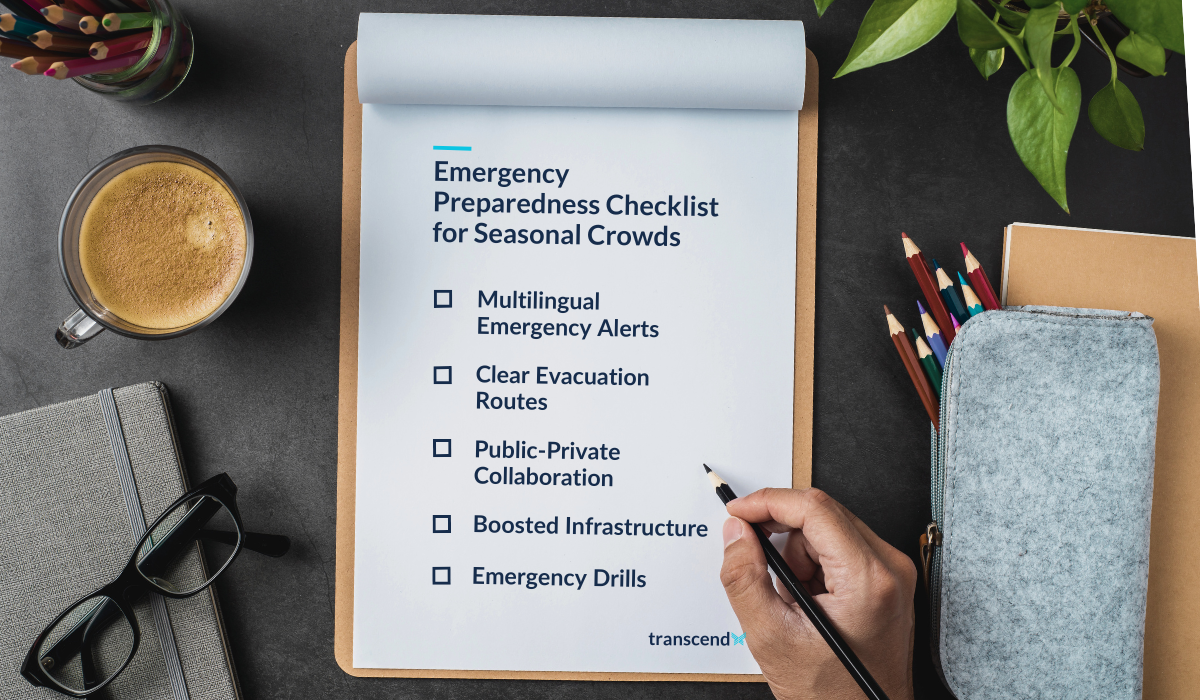Planning for Population Influxes During Peak Tourist Seasons
Every summer, small beach towns swell into bustling hubs of activity, ski resorts become packed with eager visitors during the winter holidays, and urban landmarks turn into magnets for global travelers. For many communities, peak tourist seasons are economic boons—but they also present unique challenges for emergency management. What happens when the population doubles or triples overnight? How do you plan for the strain on resources, infrastructure, and public safety? And perhaps the most pressing question of all: what do you do if disaster strikes?
Managing a sudden population influx requires meticulous planning, seamless coordination, and forward-thinking strategies. This blog explores the complexities of emergency management during peak tourist seasons, offers insights from real-world case studies, and outlines practical solutions for building resilience in high-traffic areas.
Understanding the Challenges of Seasonal Crowds
Seasonal surges in population can push even the most prepared communities to their limits. When tourists flood an area, they bring not only revenue but also a host of logistical concerns. Infrastructure that works perfectly for a town of 10,000 residents may falter when 30,000 visitors arrive for a long weekend. Public transportation systems become overcrowded, roads clog with traffic, and emergency services are stretched thin.
Take, for instance, the small town of Gatlinburg, Tennessee. During peak tourist seasons, this picturesque gateway to the Great Smoky Mountains National Park sees its population multiply several times over. In 2016, the area was devastated by wildfires that coincided with a high influx of visitors. Evacuating both residents and tourists proved to be a monumental challenge. Many visitors were unfamiliar with the area, which delayed evacuation efforts. The fires underscored the importance of tailoring emergency plans to account for transient populations who may lack local knowledge or resources.
Tourists often pose unique challenges during emergencies. They may not know evacuation routes, how to access local emergency alerts, or where to find shelter. Language barriers can complicate communication, particularly in international tourist destinations. For local officials, balancing the needs of permanent residents with those of temporary visitors requires a delicate approach.
Case Studies: Lessons from Tourist Destinations
Looking at how other regions have handled peak-season emergencies provides valuable lessons for crafting effective plans.
The 2017 Hurricane Irma Evacuations in Florida
In September 2017, Hurricane Irma threatened the Florida coastline, leading to one of the largest evacuations in U.S. history. Popular tourist destinations like Miami Beach, Key West, and Orlando faced an influx of travelers looking to leave before the storm hit. With tens of thousands of visitors unfamiliar with the area, state officials quickly mobilized to ensure evacuation routes were accessible, gas stations remained stocked, and shelters were open to everyone, regardless of residency.
Florida’s use of clear, multilingual messaging was critical. Emergency broadcasts provided step-by-step instructions for evacuees in English, Spanish, and Creole, ensuring the widest possible reach. This approach highlights the importance of inclusive communication during emergencies in high-tourism regions.
Italy’s Response to Earthquakes in Tourist Hubs
Italy’s ancient towns, from Rome to Florence, draw millions of tourists each year. When earthquakes struck central Italy in 2016, they not only threatened local communities but also imperiled thousands of visitors. Emergency planners had anticipated this possibility and integrated measures specifically for tourists. Local hotels were trained to act as temporary shelters, and tourism boards distributed information about earthquake safety in multiple languages.
Italy’s proactive efforts demonstrate the value of partnering with businesses in high-traffic areas. Hotels, tour operators, and restaurants can act as vital communication hubs, helping disseminate safety information and providing shelter or resources during a crisis.
Japan’s Tsunami Preparedness in Tourist Hotspots
Japan, a country highly vulnerable to earthquakes and tsunamis, has turned preparation into an art form. In major tourist destinations like Tokyo and Kyoto, emergency plans account for the transient population by providing evacuation maps in multiple languages at train stations, hotels, and public attractions. During the 2011 tsunami, while tourists were understandably shaken, many praised Japan’s orderly response and the availability of clear, easy-to-understand information.
This case reinforces the importance of planning for accessibility. Emergency resources that are intuitive and widely distributed can make a significant difference when seconds count.
Building Resilience for Seasonal Influxes
So, how can communities prepare for the unique challenges posed by peak tourist seasons? It all starts with planning. Below are strategies that any high-traffic area can implement to ensure resilience during population surges.
- Enhance Emergency Communication Systems
Tourists are often unaware of local emergency systems, making it essential to reach them quickly and effectively. Communities should invest in multilingual emergency alert systems that deliver messages via text, social media, and public announcement systems. For example, Hawaii’s Emergency Management Agency uses text alerts to warn visitors about tsunamis, hurricanes, and volcanic eruptions, ensuring tourists receive the same critical updates as residents.
Hotels, vacation rental platforms, and tourism boards can also be enlisted as communication partners. By providing guests with emergency resources upon check-in—such as maps of evacuation routes or instructions for accessing local alerts—businesses can play a pivotal role in keeping visitors informed.
- Partner with Local Businesses
Tourist-heavy areas often have strong networks of hotels, restaurants, and tour operators. These businesses can be invaluable partners during emergencies. In addition to acting as communication hubs, they can provide shelter, food, and water to displaced individuals.
In Aspen, Colorado, for instance, ski resorts collaborate with emergency management teams to prepare for avalanches and other winter hazards. Resorts maintain emergency supplies and train staff to assist with evacuations or first aid. This public-private collaboration ensures a swift and coordinated response when the unexpected happens.
- Boost Infrastructure Capacity During Peak Seasons
Temporary measures can help alleviate the strain on infrastructure during high-traffic periods. For example, some beach towns bring in additional first responders, medical staff, and public works employees during the summer months. Mobile medical units, extra ambulances, and pop-up shelters can be deployed to handle emergencies efficiently.
Additionally, traffic management plans can prevent gridlock, which is especially critical for ensuring emergency vehicles can reach their destinations. In tourist hotspots like Yosemite National Park, traffic control measures during peak season include designated routes for emergency access and shuttle services to reduce congestion.
- Conduct Drills with Seasonal Scenarios
Emergency drills often focus on scenarios involving local residents, but adding tourist-focused scenarios can identify gaps in preparedness. For example, conducting evacuation drills during peak season can reveal how well evacuation routes handle heavy traffic or whether visitors understand local alerts. Simulations that include language barriers, unfamiliarity with the area, and high population density can help planners create more inclusive and effective strategies.
Tourism is a vital industry for countless communities, but it comes with challenges that extend far beyond crowded restaurants and sold-out hotels. By planning ahead, leveraging local resources, and learning from the experiences of other regions, communities can manage population surges while ensuring the safety of both residents and visitors.
When disaster strikes, the last thing anyone wants is chaos. With the right strategies in place, we can bring order to the most hectic seasons, safeguarding lives and livelihoods in the process.
Sources
- FEMA. (2017). Hurricane Irma Evacuation Report.
- Italian National Institute for Geophysics and Volcanology. (2016). Earthquake Preparedness for Tourists.
- Hawaii Emergency Management Agency. (2023). Visitor Emergency Alert Systems.
- Aspen Emergency Services. (2020). Public-Private Partnerships in Winter Hazards Management.
- Japan Meteorological Agency. (2011). Lessons from the Great East Japan Earthquake.



.jpg)
